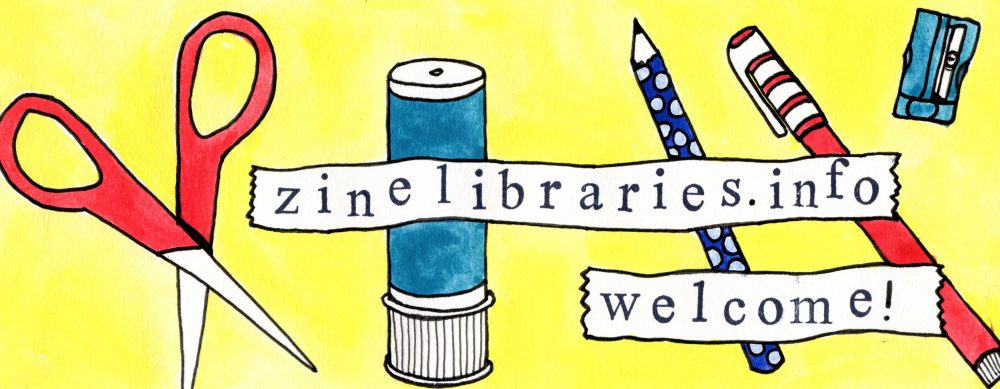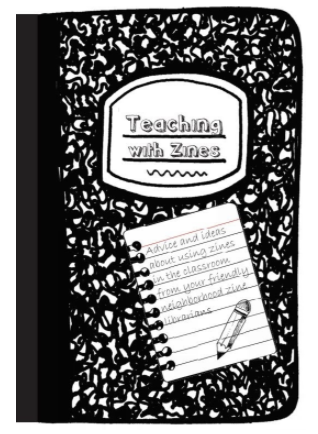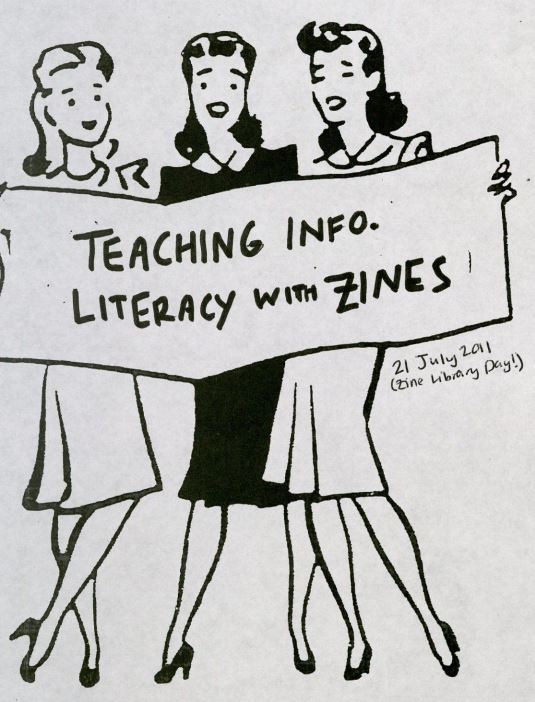If you’re interested in teaching with zines, below are some great resources, some in zine format!
This “Teaching with Zines” zine is a great introduction to using zines in the classroom. The zine has a list of resources, best practices, ideas for creating meaningful activities, and discussion of assessment and different types of learners. It was written in June 2018 by Kathleen Aragon, Deanie Adams, Jolie Braun, Emma Fernhout, Juli Huddleston, Kelly McElroy, André Wenzel, and Kelly Wooten.
Another great place to start is Kelly McElroy’s Teaching Info Lit with Zines (pdf). Kelly uses the ACRL Information Literacy Competency Standards for Higher Education to frame three sample lesson plans for undergraduates. The zine also deftly describes why you might want to teach with zines: they’re self-published and often informal, so “they may be less threatening to learners,” and they demonstrate a “very accessible way for learners to synthesize and compile their own knowledge.”
In a blog post called “Let’s Talk About: Zines in the Classroom, Pros and Cons,” Liz Mayorga from the POC Zine Project brings up valuable caveats about teaching with zines and the expectations of creating (and being graded on) zines with personal material. It includes a list of questions educators should ask themselves before bringing zine-making into the classroom. It’s essential reading!
For a more in-depth analysis, the Ph.D. dissertation of Karin H. deGravelles, In the ruins of zine pedagogy: a narrative study of teaching with zines, explores the praxis of using zines in the classroom.
The Brown University has a “zines in the classroom” subject guide which has list of ways to integrate zines in the classroom as well as additional resources.
A case study from the University of Nebraska Omaha describing librarians teaming up with professors to allow zine creation as a creative alternative to a typical research paper project for a course is outlined in this 2020 article: The Librarian’s Guide to Zines for Classroom and Community by Claire Du Laney, Monica Maher, and Amy Schindler.
The Douglas College Library in British Columbia has a LibGuide focused on zines in the classroom, including various examples of how faculty have incorporated zines in their classes. There’s also a zine assignment rubric for an intro gender studies course.
For middle school and high school students, this blog post by art teacher Raymond Yang provides information about why and how to implement zine-making in the classroom: “Why Zines Need to Be a Part of Your Curriculum“.
For more information on zine-making skills, see our Intro to Zines page. Check out the Workshops/ Programs page for more ideas for running events.



Looking for an alternative way of delivering educational materials to students who learn in an alternative environment.